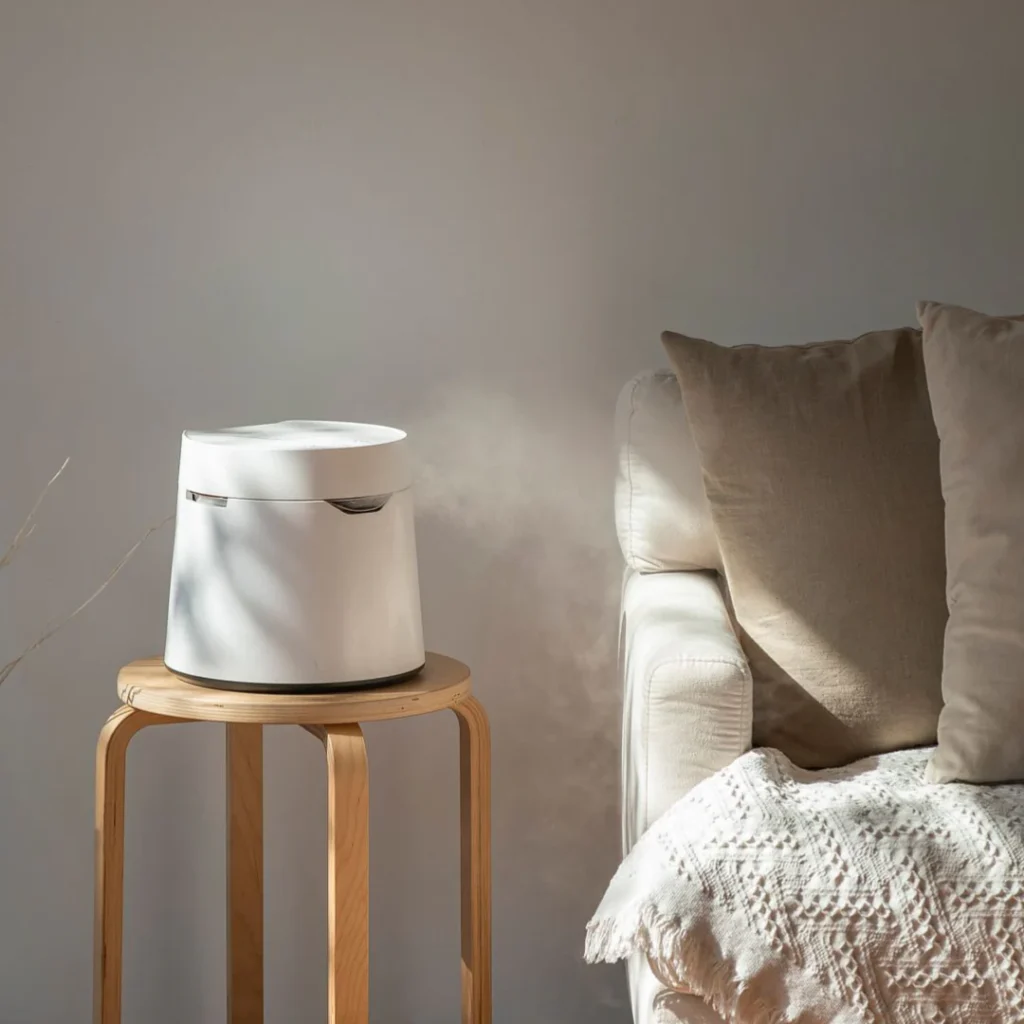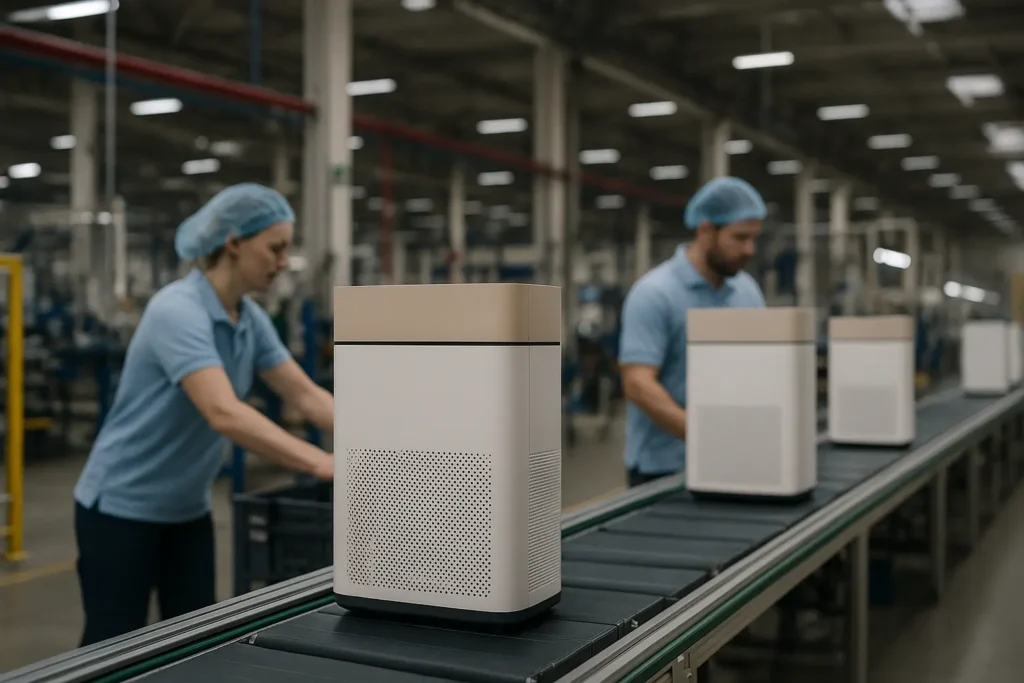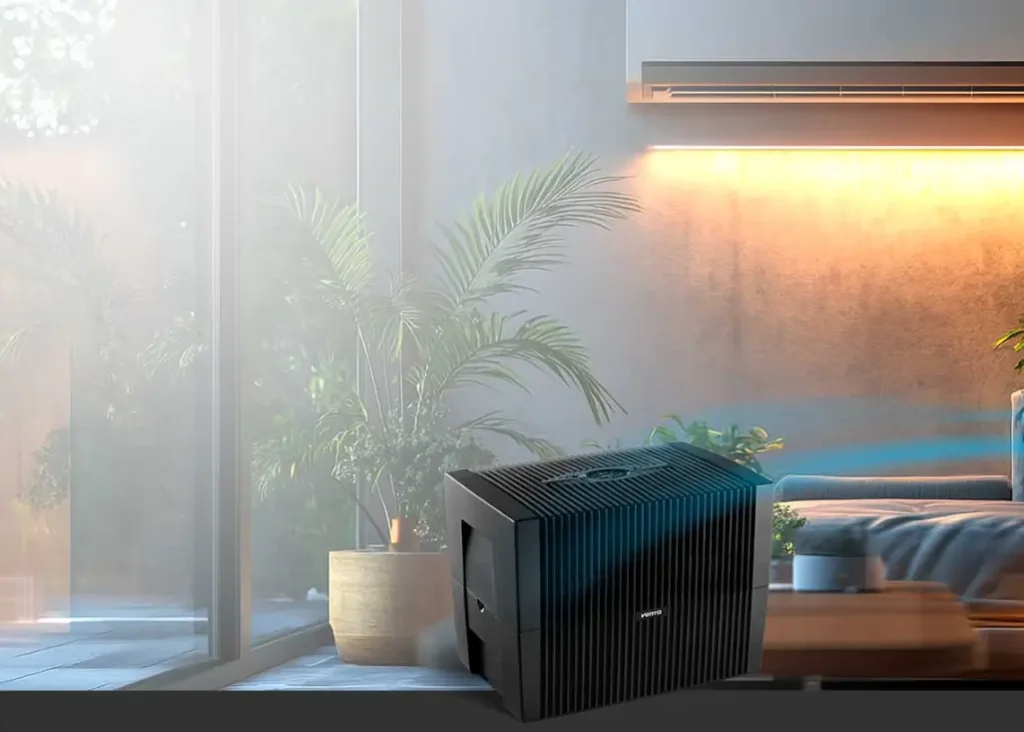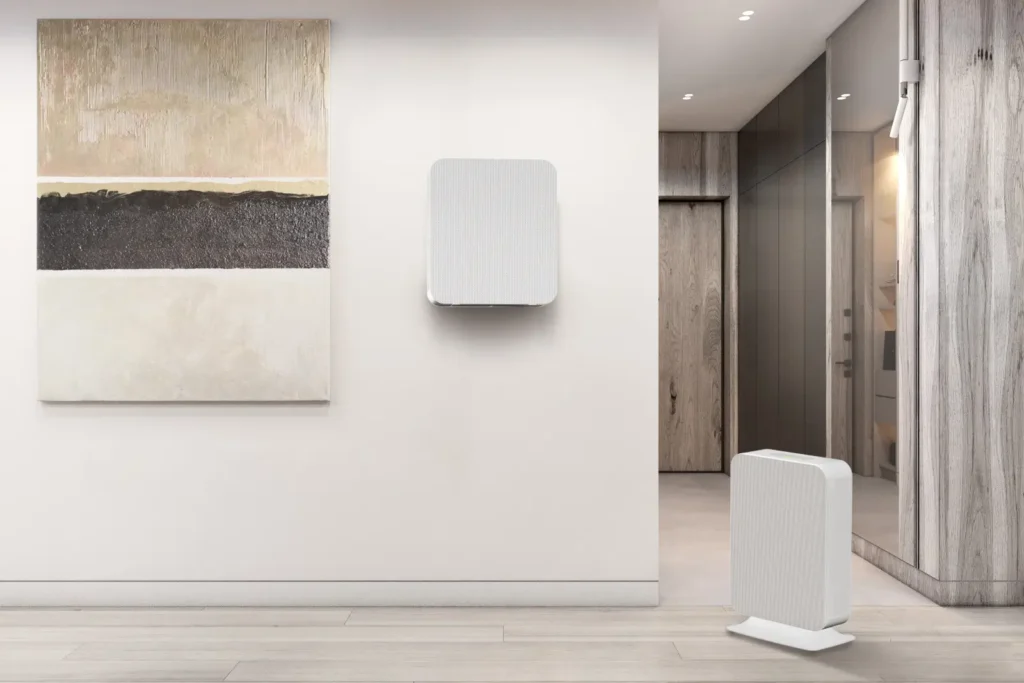
Dans la quête actuelle d'un air intérieur plus pur, la technologie des capteurs dans les purificateurs d'air joue un rôle essentiel.
Lorsque vous choisissez la technologie des capteurs pour les purificateurs d'air, tenez compte de facteurs tels que le type de polluants que vous souhaitez surveiller (par exemple, les PM2,5, les COV), la précision des capteurs, l'intégration avec les appareils IoT, la réputation de la marque et le rapport coût-efficacité. Ces éléments influencent la surveillance globale de la qualité de l'air et l'efficacité du système.
Bien qu'il soit essentiel de comprendre ces facteurs fondamentaux, une analyse plus approfondie des types de capteurs spécifiques, de leurs fonctionnalités et des tendances du marché peut optimiser votre processus de prise de décision. Poursuivez votre lecture pour découvrir l'évolution de la technologie des capteurs de purification de l'air et la manière de l'adapter à vos besoins.
Les capteurs de PM2.5 sont essentiels pour les purificateurs d'air.Vrai
Ils détectent les particules fines, cruciales pour la pollution urbaine.
Quels sont les types de capteurs les plus courants dans les purificateurs d'air ?
Les capteurs sont les sentinelles silencieuses des purificateurs d'air. Ils détectent les polluants pour garantir un air pur.
Les capteurs les plus courants dans les purificateurs d'air sont les capteurs de PM2.5, de température et d'humidité, COV et les capteurs de CO2. Ces capteurs surveillent divers polluants intérieurs et conditions environnementales, améliorant ainsi l'efficacité des purificateurs d'air dans le maintien d'une qualité d'air intérieur saine.
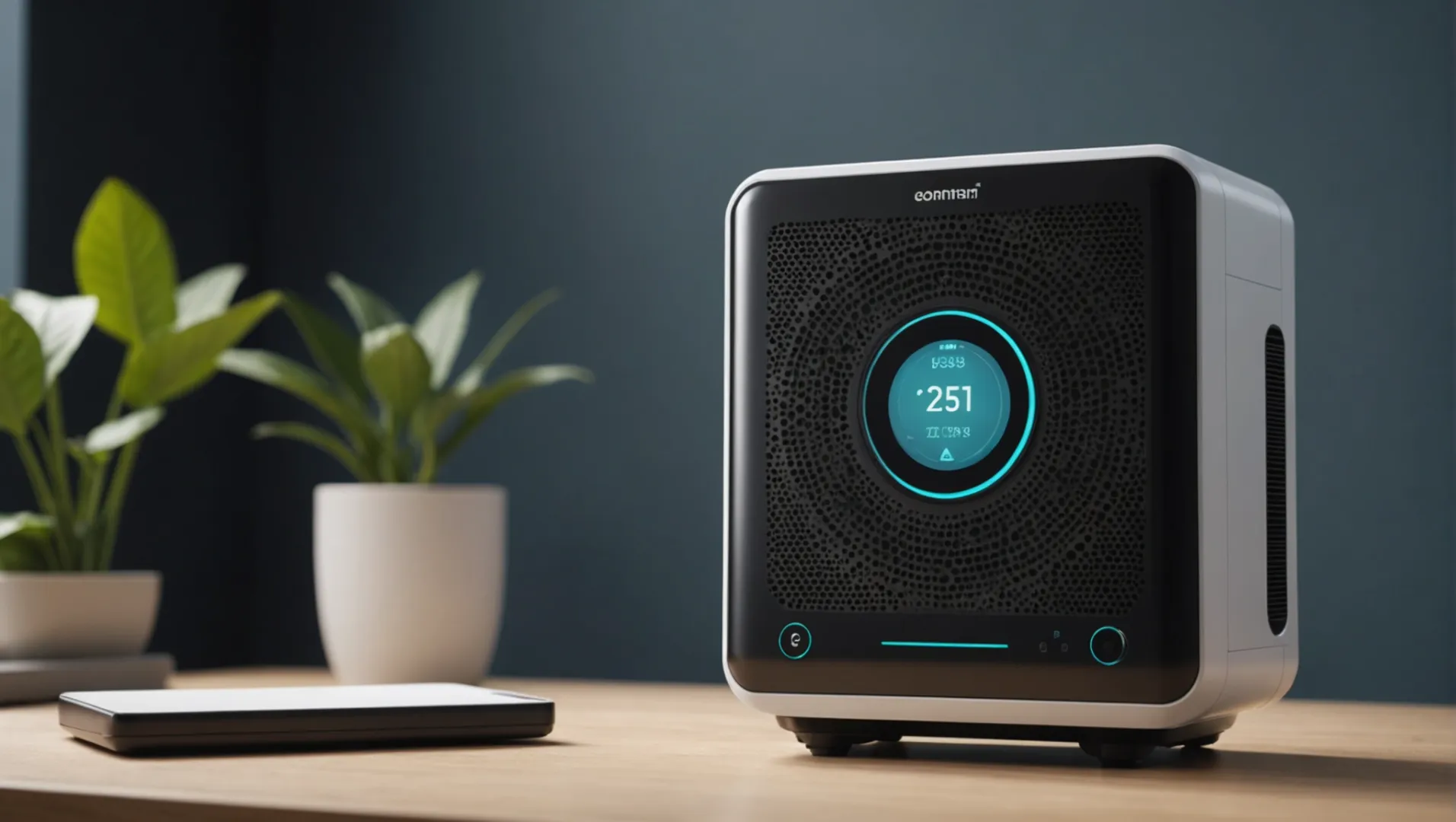
Capteurs de PM2.5 : Les détecteurs de particules fines
Les capteurs de PM2.5 sont essentiels pour détecter les particules fines, qui peuvent pénétrer profondément dans les poumons et même dans la circulation sanguine. Traditionnellement, Entreprises suisses1 comme Sensirion ont été les leaders dans ce domaine, offrant des capteurs de haute précision. Toutefois, des acteurs émergents de Chine, tels que Cubic et Plantower, ont acquis une certaine notoriété grâce à leurs solutions rentables et performantes.
Capteurs de température et d'humidité : Moniteurs de conditions environnementales
Ces capteurs permettent de maintenir des conditions de fonctionnement optimales pour les purificateurs d'air en ajustant les réglages en fonction de la température et de l'humidité ambiantes. Ils garantissent que le purificateur fonctionne efficacement dans différents scénarios environnementaux, en évitant les dommages et en maintenant la qualité de l'air de manière efficace.
COV et les capteurs de CO2 : Les sentinelles chimiques
Les composés organiques volatils (COV) et le dioxyde de carbone sont des polluants intérieurs importants qui affectent la santé et le confort. COV détectent les produits chimiques nocifs qui peuvent se dégager des produits ménagers, tandis que les capteurs de CO2 contrôlent la fraîcheur de l'air. L'intégration de ces capteurs permet de répondre à un plus large éventail de problèmes liés à la qualité de l'air intérieur.
Technologies émergentes en matière de capteurs : Au-delà de l'essentiel
Avec les progrès de l'IoT et de l'IA, les purificateurs d'air modernes commencent à intégrer des capteurs supplémentaires tels que des capteurs de bruit, de lumière, de pression et d'occupation. Des entreprises comme HisoAir sont à l'avant-garde de l'intégration de ces qualité de l'environnement intérieur2 ouvrant la voie à des systèmes de purification de l'air plus intelligents et plus adaptatifs.
Pour choisir le bon ensemble de capteurs, il est essentiel de tenir compte des polluants spécifiques à surveiller dans votre environnement et du rapport coût-bénéfice de chaque type de capteur. En collaborant avec des fournisseurs expérimentés, vous pouvez encore mieux adapter vos choix à vos besoins spécifiques.
Les capteurs de PM2.5 détectent les particules fines.Vrai
Les capteurs de PM2.5 surveillent les particules qui peuvent pénétrer dans la circulation sanguine.
Les capteurs de CO2 mesurent la température dans les purificateurs d'air.Faux
Les capteurs de CO2 mesurent les niveaux de dioxyde de carbone, et non la température.
Quel est l'impact de la technologie des capteurs sur l'efficacité des purificateurs d'air ?
Grâce à la technologie des capteurs, les purificateurs d'air offrent des performances optimales et une meilleure qualité de l'air.
Les technologies des capteurs influencent l'efficacité des purificateurs d'air en détectant avec précision les polluants, en optimisant l'utilisation des filtres et en permettant des fonctionnalités intelligentes. Les capteurs tels que les PM2,5, le CO2 et les COV jouent un rôle crucial dans la surveillance de la qualité de l'air et le déclenchement d'actions de purification appropriées, améliorant ainsi l'efficacité globale et la satisfaction de l'utilisateur.
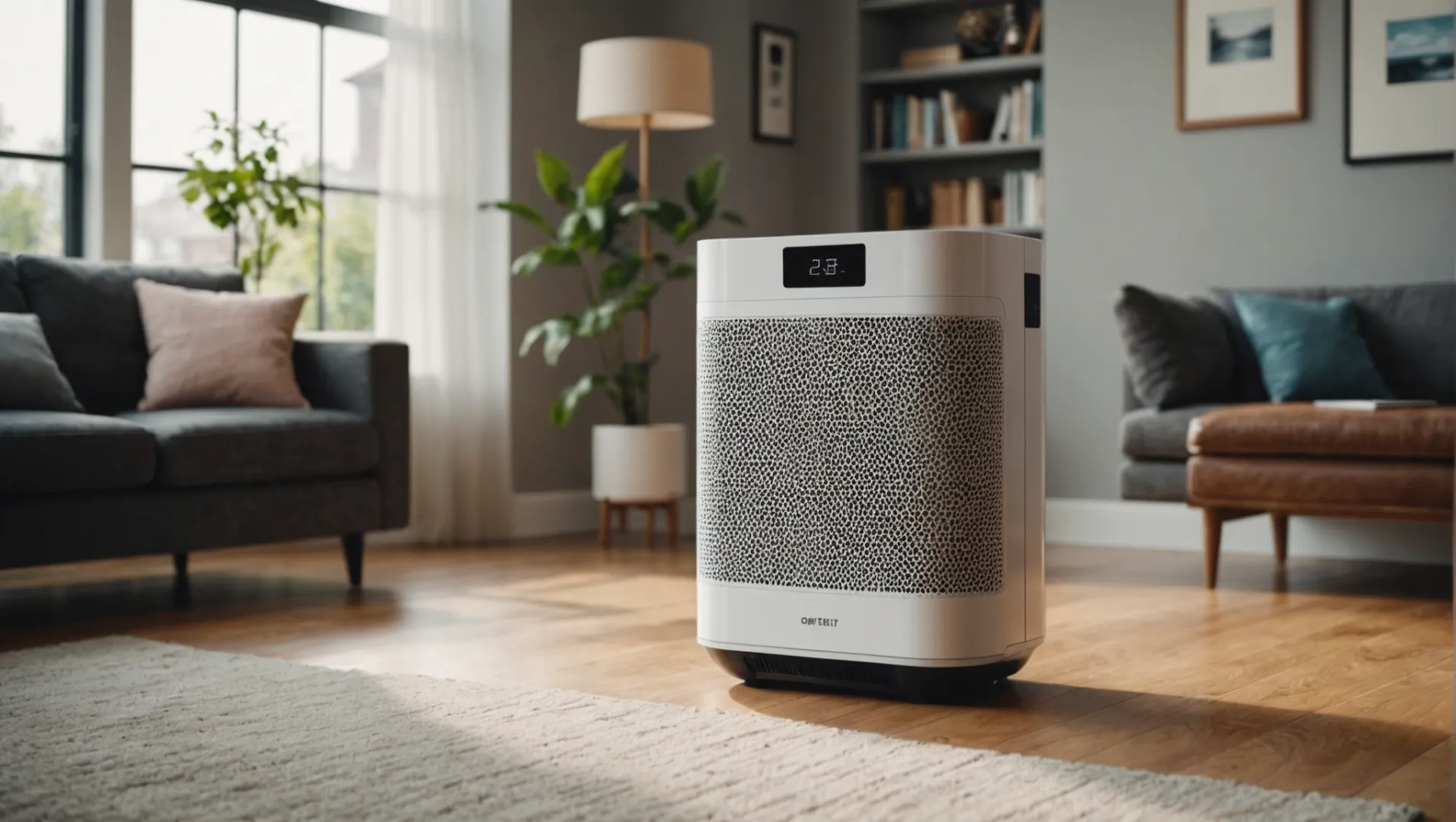
Comprendre les principaux types de capteurs des purificateurs d'air
Les purificateurs d'air utilisent une variété de capteurs pour améliorer leur efficacité à maintenir la qualité de l'air intérieur. Parmi ces capteurs, le Capteurs de PM2.53 sont essentiels car ils détectent les particules fines, ce qui permet au purificateur d'ajuster sa puissance de filtration en conséquence. Cette fonction est essentielle pour les personnes vivant dans des zones urbaines où les niveaux de pollution sont élevés.
En outre, Capteurs de CO24 aident à contrôler les niveaux de dioxyde de carbone, garantissant ainsi que l'air intérieur reste frais et sain. Les consommateurs sont de plus en plus sensibilisés, COV (composés organiques volatils) deviennent également une caractéristique standard. Ces capteurs identifient les gaz et les produits chimiques nocifs, ce qui incite le purificateur à activer les processus de nettoyage nécessaires.
Le rôle de la précision des capteurs et de la réputation de la marque
L'efficacité d'un purificateur d'air dépend fortement de la précision de ses capteurs. Les capteurs de marques réputées telles que Sensirion et de nouveaux venus tels que Cubic et Plantower sont devenus des normes industrielles en raison de leur fiabilité et de leur précision.
Un facteur clé à prendre en compte est la qualité de l'intégration de ces capteurs avec d'autres appareils domestiques intelligents. Cette intégration améliore non seulement le confort de l'utilisateur, mais permet également une collecte de données plus précise, ce qui se traduit par des processus de purification plus intelligents.
Intégrer l'IdO pour améliorer la purification de l'air
L'internet des objets (IdO) a révolutionné le fonctionnement des purificateurs d'air. En intégrant des capteurs à la technologie IoT, les purificateurs d'air peuvent désormais collecter des données provenant de sources multiples telles que la température, l'humidité et même les niveaux de bruit. Des entreprises comme HisoAir sont à l'avant-garde de cette tendance en incorporant des IEQ capteurs5 qui surveillent divers paramètres environnementaux, offrant ainsi une approche plus complète de la gestion de la qualité de l'air.
Ces progrès dans la technologie des capteurs signifient que les purificateurs d'air peuvent fonctionner de manière autonome, en ajustant leurs réglages sur la base de données en temps réel. Cela permet d'améliorer l'efficacité énergétique et de garantir que le purificateur d'air fonctionne de manière optimale à tout moment.
Rapport coût-efficacité et tendances du marché
Si les capteurs de haute qualité ont souvent un prix plus élevé, leur rentabilité au fil du temps peut compenser les dépenses initiales. Le marché s'oriente vers des technologies de capteurs plus abordables mais fiables, proposées par des marques telles que Cubic et Plantower. Cette tendance est encourageante car elle permet aux consommateurs d'accéder à des solutions avancées de purification de l'air sans se ruiner.
En comprenant ces facteurs, les consommateurs peuvent prendre des décisions éclairées sur les purificateurs d'air qui répondront le mieux à leurs besoins tout en garantissant une efficacité maximale.
Les capteurs de PM2.5 ajustent la puissance de filtration du purificateur d'air.Vrai
Les capteurs de PM2.5 détectent les particules fines, ce qui permet d'ajuster la filtration.
L'intégration de l'IdO diminue l'efficacité des purificateurs d'air.Faux
L'IdO améliore l'efficacité en permettant des ajustements en temps réel fondés sur des données.
Quelles marques proposent des capteurs de qualité de l'air fiables ?
Le choix d'une marque fiable de capteurs de qualité de l'air est crucial pour une purification efficace de l'air.
Les marques de capteurs de qualité de l'air les plus fiables sont Sensirion, Cubic, Plantower et HisoAir. Ces entreprises sont reconnues pour leur technologie de capteur avancée, offrant une grande précision et des capacités d'intégration. Lors du choix d'une marque, tenez compte de facteurs tels que les performances, la rentabilité et la compatibilité avec les systèmes IoT afin de garantir une surveillance optimale de la qualité de l'air.

Sensirion : La précision suisse dans la technologie des capteurs
Sensirion est une entreprise suisse réputée pour ses produits de haute précision. capteurs de qualité de l'air6Ces capteurs sont largement utilisés dans les purificateurs d'air haut de gamme en raison de leur précision et de leur fiabilité exceptionnelles. Leurs capteurs sont largement utilisés dans les purificateurs d'air haut de gamme en raison de leur précision et de leur fiabilité exceptionnelles. L'expertise de Sensirion en matière d'intégration de capteurs en fait un choix de premier ordre pour ceux qui privilégient la précision dans la mesure de la qualité de l'air.
Étoiles montantes de Chine : Cubic et Plantower
Ces dernières années, des marques chinoises comme Cubic et Plantower ont acquis une certaine notoriété dans le secteur des purificateurs d'air. Connues pour leurs des capteurs de PM2.5 rentables7Ces marques offrent des améliorations de performance impressionnantes qui rivalisent avec des noms plus établis. Comme la technologie continue de progresser, ces marques deviennent des choix de plus en plus populaires parmi les fabricants qui recherchent des solutions abordables mais fiables.
Extension des capacités des capteurs : L'innovation de HisoAir
HisoAir est un fournisseur de premier plan qui intègre divers capteurs pour améliorer la fonctionnalité des purificateurs d'air. Leur approche comprend l'ajout de CO2, COVet de formaldéhyde, ce qui permet de traiter un plus large éventail de polluants intérieurs. L'intégration par HisoAir de qualité de l'environnement intérieur (IEQ)8 comme les capteurs de bruit, de lumière et d'occupation, représente une stratégie avant-gardiste qui s'aligne sur la demande croissante de systèmes de purification de l'air plus intelligents et plus complets.
Facteurs à prendre en compte lors du choix d'une marque de capteur
Lorsque vous choisissez une marque de capteur, tenez compte des polluants spécifiques que vous devez surveiller et des exigences globales du système. Évaluez les caractéristiques suivantes du capteur les capacités d'intégration avec les systèmes IoT9qui peut améliorer considérablement la précision et l'efficacité du contrôle. En outre, évaluez la réputation de la marque en termes d'innovation, d'assistance à la clientèle et de respect des normes industrielles.
| Marque | Caractéristiques principales | Produits remarquables |
|---|---|---|
| Sensirion | Haute précision, fiabilité | Capteurs de PM2.5 |
| Cubique | Rentabilité, amélioration des performances | Capteurs de PM2.5 |
| Planter | Une qualité reconnue, un prix abordable | Capteurs de PM2.5 |
| HisoAir | Intégration innovante de plusieurs capteurs | IEQ Capteurs |
Comprendre les points forts de chaque marque et la façon dont ils s'alignent sur vos besoins spécifiques peut conduire à un meilleur contrôle de la qualité de l'air et à une amélioration des environnements intérieurs.
Les capteurs Sensirion sont connus pour leur grande précision.Vrai
Sensirion est réputé pour la précision de ses capteurs de qualité de l'air, en particulier pour les PM2.5.
HisoAir ne produit que des capteurs de PM2.5.Faux
HisoAir intègre plusieurs capteurs, dont le CO2 et les COV, et pas seulement les PM2,5.
Comment l'IdO et l'IA peuvent-ils améliorer les capteurs des purificateurs d'air ?
Grâce à l'IoT et à l'IA, les purificateurs d'air sont révolutionnés, offrant une gestion plus intelligente et plus efficace de la qualité de l'air.
L'IoT et l'IA améliorent les capteurs des purificateurs d'air en permettant la collecte de données en temps réel, l'analyse prédictive et la réponse adaptative à des conditions de qualité de l'air variables. Cette intégration permet aux purificateurs d'air d'ajuster les paramètres de manière autonome, garantissant ainsi une qualité d'air intérieur et une efficacité énergétique optimales.
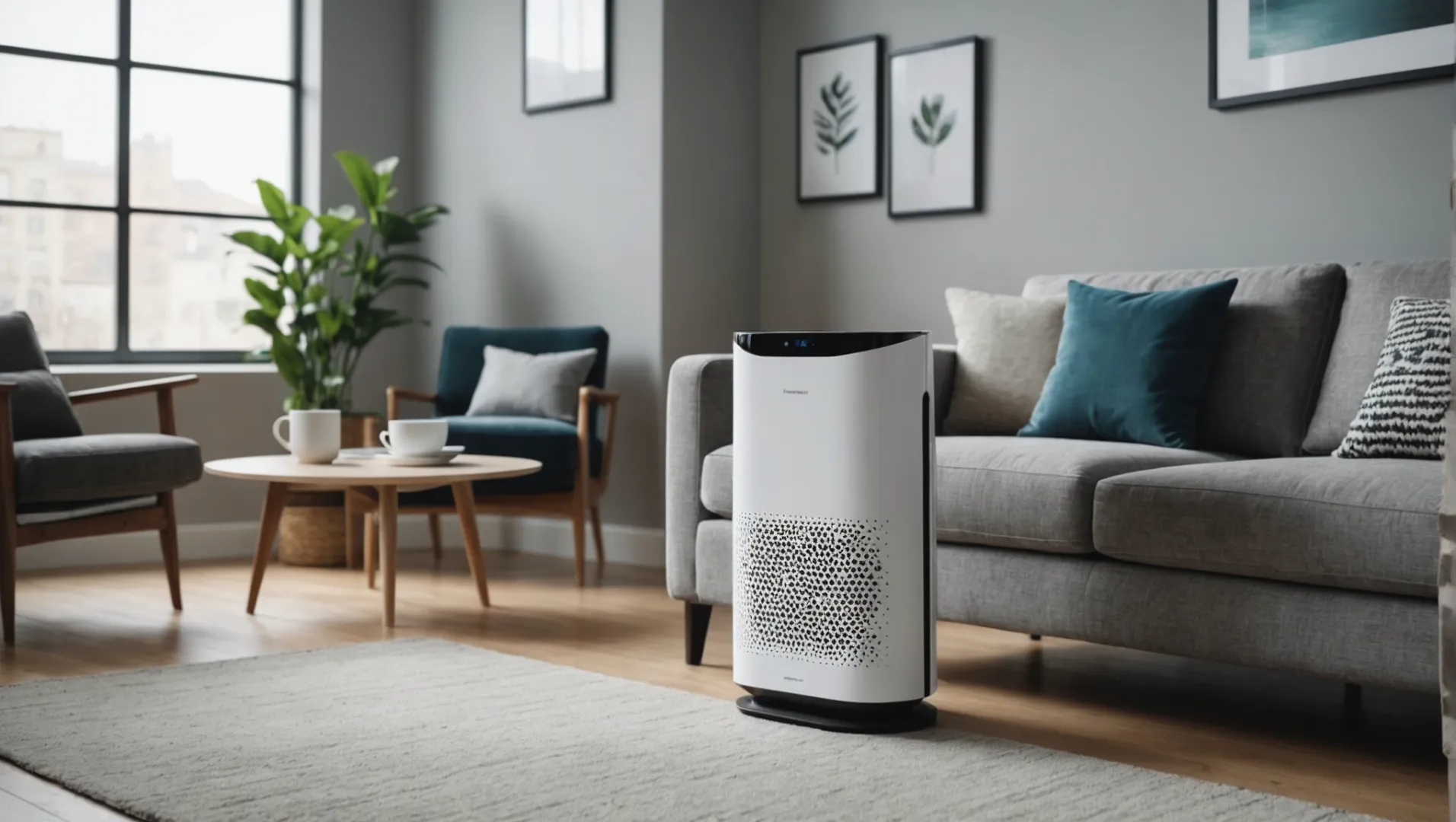
Le rôle de l'IdO dans les purificateurs d'air
L'intégration de l'Internet des objets (IdO) dans les purificateurs d'air permet une communication transparente entre les appareils. Les capteurs compatibles avec l'IdO peuvent transmettre des données sur la qualité de l'air en temps réel à un système central, offrant ainsi aux utilisateurs un aperçu détaillé de leur environnement intérieur. Cette connectivité améliore non seulement l'expérience de l'utilisateur, mais contribue également à des mesures d'économie d'énergie en ajustant les réglages du purificateur en fonction des besoins actuels. Des marques de premier plan comme HisoAir ont été les premières à adopter cette approche, en intégrant dans leurs modèles des capteurs avancés tels que des détecteurs de bruit et de lumière.
L'influence de l'IA sur la fonctionnalité des capteurs
L'intelligence artificielle (IA) fait passer l'intégration des capteurs au niveau supérieur en utilisant des algorithmes d'apprentissage automatique pour analyser les données collectées. En comprenant les schémas d'évolution de la qualité de l'air, l'IA peut prédire les pics de pollution et ajuster le fonctionnement du purificateur en conséquence. Par exemple, l'IA peut apprendre les habitudes d'un ménage et augmenter de manière préventive la filtration pendant les périodes de cuisson ou de nettoyage, optimisant ainsi les performances de l'appareil.
Amélioration de la gestion de la qualité de l'air
Grâce à la combinaison de l'IoT et de l'IA, les purificateurs d'air peuvent aller au-delà de la simple détection des polluants. Ils offrent désormais un service complet de qualité de l'environnement intérieur (IEQ) en intégrant de multiples capteurs tels que des détecteurs de CO2, de COV et de formaldéhyde. Cette approche multi-capteurs permet de contrôler un plus large spectre de polluants atmosphériques et d'obtenir une atmosphère intérieure plus saine.
Tendances du marché et innovations des marques
Avec l'évolution des technologies des capteurs, des marques comme Cubic et Plantower sont devenues des acteurs importants du secteur. Elles proposent des solutions rentables qui ne font aucun compromis sur les performances. Ces avancées sont cruciales car les consommateurs exigent de plus en plus des appareils domestiques intelligents à la fois fiables et abordables.
L'intégration de l'IdO et de l'IA dans les capteurs des purificateurs d'air permet non seulement d'élever la technologie, mais aussi de s'aligner sur les objectifs de vie durable en améliorant l'efficacité énergétique. Pour en savoir plus sur les dernières avancées en matière de technologies des capteurs, pensez à explorer le site web de l'Agence européenne pour l'environnement. tendances du marché des capteurs10 aujourd'hui.
L'IdO permet de collecter des données en temps réel dans les purificateurs d'air.Vrai
L'IdO permet aux capteurs de transmettre en temps réel des données sur la qualité de l'air à des fins d'analyse.
L'IA ne peut pas prédire les pics de pollution dans les purificateurs d'air.Faux
L'IA utilise l'apprentissage automatique pour prédire les pics de pollution sur la base de modèles de données.
Conclusion
Pour choisir la bonne technologie de capteur, il faut trouver un équilibre entre les performances et le coût. Classez les capteurs essentiels par ordre de priorité en fonction de vos besoins et faites appel à des fournisseurs réputés pour améliorer la qualité de l'air.
-
Découvrez les grandes marques de capteurs suisses connues pour leur précision.. : La filtration HyperHEPA d'IQAir fait de la série HealthPro les meilleurs purificateurs d'air, éprouvés et certifiés pour filtrer 99,5% des plus petites particules existantes. ↩
-
Découvrez les capteurs de pointe qui améliorent la technologie des purificateurs d'air.. : Cette page présente les résultats d'études visant à évaluer les performances et la précision de la technologie des capteurs d'air. ↩
-
Découvrez comment les capteurs de PM2.5 détectent efficacement les particules fines.. : Un capteur de PM2.5 est un capteur de haute précision qui surveille la concentration des particules PM2.5 en temps réel. ↩
-
Découvrez le rôle des capteurs de CO2 dans le maintien d'un air intérieur frais.. : Les capteurs de CO2 électrochimiques utilisent le courant électrique ou la conductivité pour mesurer les concentrations de CO2 dans l'air. Lorsque le CO2 pénètre dans le capteur, une réaction chimique ... ↩
-
Découvrez comment les capteurs IEQ améliorent la gestion globale de la qualité de l'air.. : Ces capteurs mesurent divers paramètres liés au confort d'un espace intérieur, tels que la température, l'humidité, les niveaux de CO2, etc. ↩
-
Découvrez pourquoi Sensirion est à la pointe de la technologie des capteurs de précision.. : Les moniteurs de qualité de l'air intérieur sont conçus pour mesurer et évaluer divers paramètres et polluants. Ils suivent et rendent compte des conditions de l'air en temps réel. ↩
-
Découvrez les avis des utilisateurs sur les capteurs PM2.5 de Cubic et Plantower.. : L'appareil ne dispose pas d'un capteur de COV, mais je peux l'excuser compte tenu de son prix abordable. ↩
-
Découvrez les stratégies innovantes d'HisoAir en matière d'intégration de capteurs.. : Combinant des capteurs de température, d'humidité, de bruit et de lumière, notre système assure une qualité d'air et un confort optimaux. Il s'adapte intelligemment et en temps réel à ... ↩
-
Comprendre comment l'IdO améliore la fonctionnalité des capteurs de qualité de l'air.. : L'utilisation de l'IdO pour la surveillance de la qualité de l'air signifie que les villes peuvent avoir un aperçu en temps réel des niveaux de polluants. Cette immédiateté dans l'acquisition des données est essentielle pour ... ↩
-
Découvrez les dernières avancées et innovations en matière de technologie des capteurs.. : De nombreux purificateurs sont équipés de capteurs à code couleur qui vous indiquent le niveau de particules dans votre maison. L'appareil se règle alors automatiquement pour ... ↩


